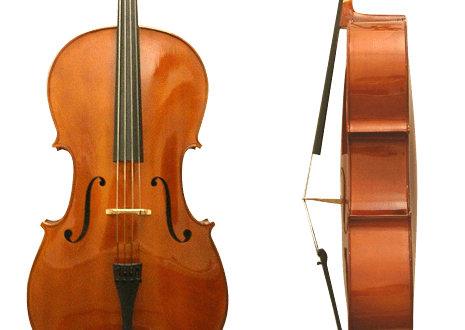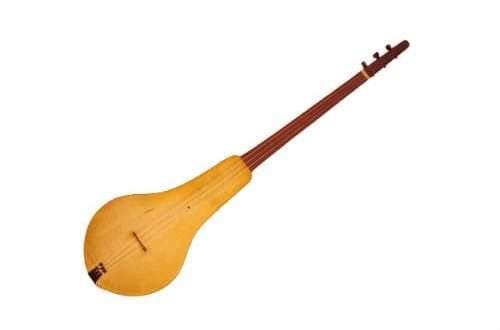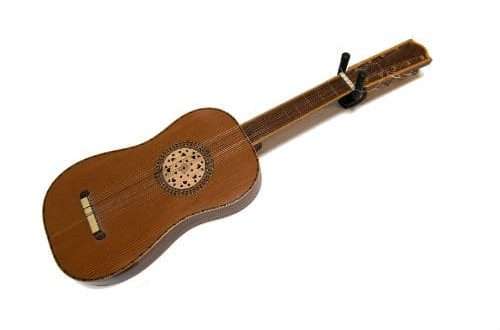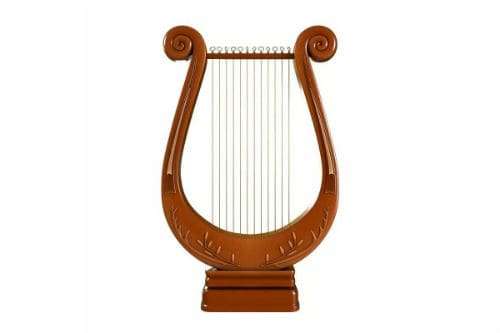
Lyra: description of the instrument, composition, history, sound, use, playing technique
There are popular words that are used without thinking about their origin. Poems, comedies, songs, conversations can be lyrical – but what does this epithet really mean? And where did the understandable word “lyric” come from in different languages?
What is a lira
The appearance of a spiritual epithet and the term humanity owes to the ancient Greeks. The lyre is a musical instrument, playing which was part of the basic curriculum for the citizens of Ancient Greece. The number of strings on the classical lyre was seven, in accordance with the number of planets, and symbolized world harmony.
To the accompaniment of the lyre, solo epic compositions were read in chorus in public and works of small poetic forms in a select circle, hence the name of the genre of poetry – lyrics. For the first time, the word lyra is found in the poet Archilochus – the find dates back to the middle of the XNUMXth century BC. The Greeks used this term to designate all the instruments of the lyre family, the most famous of them – the forming, which is mentioned in the Iliad, barbit, cithara and helis (which means turtle in Greek).
An ancient stringed plucked instrument, comparable to the harp in popularity in ancient literature, in modern times is known as the emblem of musical art, an international symbol of poets and military bands.

Tool device
The stringed lyre inherited its round shape from the first items made from tortoise shell. The flat body was covered with a cowhide membrane, equipped with two antelope horns or curved wooden racks on the sides. A crossbar was attached to the upper part of the horns.
On the finished structure, which looked like a collar, they pulled strings of the same length from sheep intestines or hemp, flax, numbering from 3 to 11. They were attached to the bar and the body. For performances, the Greeks preferred 7-string instruments. There were also 11-12-string and separate 18-string experimental specimens.
Unlike the Greeks and Romans, other ancient Mediterranean and Near Eastern cultures often used a quadrangular resonator.
Later northern European counterparts also had their differences. The oldest German lyre found dates back to the 1300th century, and the Scandinavian rotta dates back to XNUMX. The medieval German rotta is made according to the same principles as the Hellenic examples, but the body, posts and crossbar are carved from solid wood.

History
In paintings and ancient sculptures, Apollo, the Muses, Paris, Eros, Orpheus, and, of course, the god Hermes are depicted with a lyre. The Greeks attributed the invention of the first instrument to this inhabitant of Olympus. According to legend, the ancient baby god took off his diapers and set off to steal sacred cows from another god, Apollo. Along the way, the child prodigy made a lyre out of a turtle and sticks. When the theft was discovered, Hermes impressed Apollo so much with his craft that he left him the cows and took the musical toy for himself. Therefore, the Greeks call the cult instrument Apollonian, in contrast to the Dionysian wind aulos.
A musical instrument in the form of a collar is depicted on the artifacts of the peoples of the Middle East, Sumer, Rome, Greece, Egypt, appears under the name “kinnor” in the Torah. In the Sumerian state of Ur, ancient lyres were preserved in the tombs, one of them with traces of 11 pegs. An element of a 2300-year-old similar instrument was found in Scotland, which looks like a tailpiece. The lyre is considered the common ancestor of a number of modern stringed instruments.
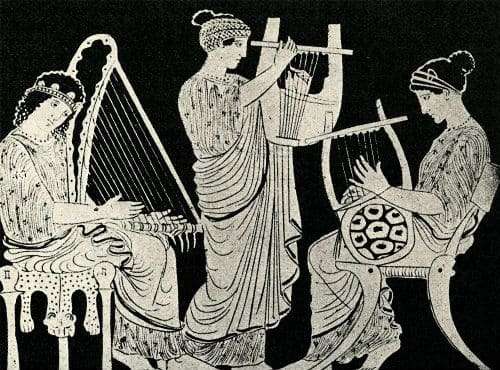
Using
Thanks to Homer’s poems, details have been preserved of how musical instruments participated in the life of Mycenaean society at the end of the 2nd millennium BC. String music was used in the joint performance of work, in honoring the gods, common Greek holidays, symposiums and religious processions.
Poets and choirs performed works to the accompaniment of the lyre at parades in honor of military victories, sports competitions, and the Pythian Plays. Without the accompaniment of poets, wedding celebrations, feasts, grape harvesting, funeral ceremonies, household rituals and theatrical performances could not do. Musicians participated in the most important part of the spiritual life of the ancient peoples – holidays in honor of the gods. Dithyrambs and other laudatory hymns were read to the plucking of the strings.
Learning to play the lyre was used in the upbringing of a harmonious new generation. Aristotle and Plato insisted on the need for music in the formation of personality. Playing a musical instrument was an indispensable element in the education of the Greeks.
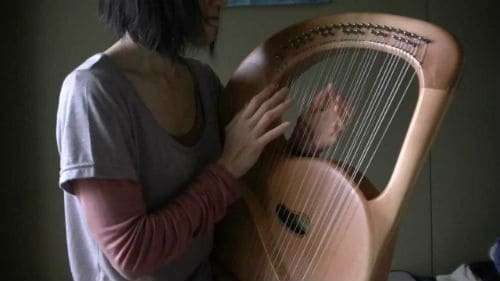
How to play the lyre
It was customary to hold the instrument vertically, or tilted away from you, approximately at an angle of 45 °. The reciters performed standing or sitting. They played with a large bone plectrum, muffling other, unnecessary strings with their free hand. A string was attached to the plectrum.
The tuning of the ancient instrument was carried out according to a 5-step scale. The technique of playing the varieties of lyres is universal – having mastered one stringed plucked instrument, the musician could play all of them. Moreover, the standard of 7 strings was maintained throughout the lyre family.
Multi-string was condemned as an excess, leading to polyphony. From the musician in antiquity they demanded restraint in performance and strict nobility. Playing the lyre was available to men and women. The only gender prohibition concerned a cithara with a massive wooden case – only boys were allowed to study. Singers with kitharas (kifarods) sang Homer’s poems and other hexametric verses to specially designed melodic compositions – nomes.



